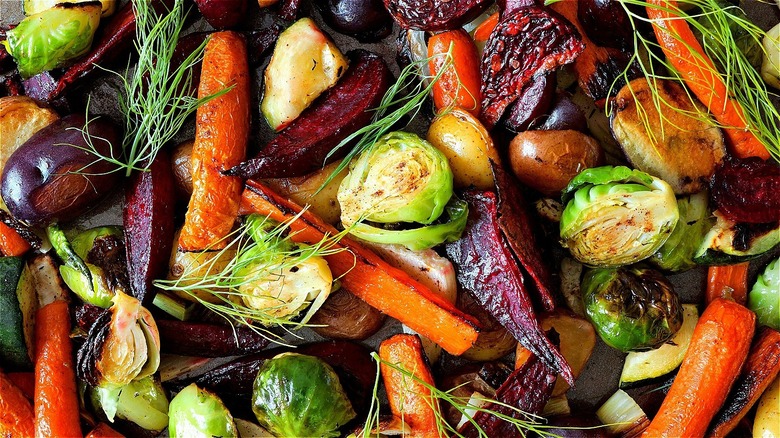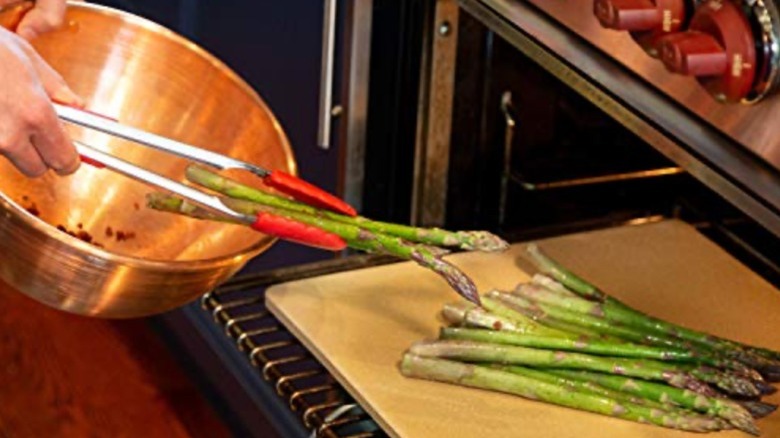Why You Should Roast Vegetables On A Pizza Stone
There isn't a vegetable grown that isn't improved by roasting. Tender inside, crispy, and caramelized outside, roasted vegetables taste sweeter and have a wonderful texture. Thanks to the Maillard Reaction, roasting coaxes out the veggie's natural sweetness, a great trick when you're eating out-of-season vegetables (we're talking to you tasteless tomatoes in February) or introducing a new vegetable to the family (how else could we love Brussels sprouts) via Science of Cooking.
While any vegetable can be roasted year-round, Well Plated points out that not every vegetable should be prepared the same way. If you are cooking a variety of vegetables together, spread them in a single layer without crowding the pan. Air should be allowed to circulate the veggies so the exterior can crisp. Overlapping or crowded vegetables will steam and end up mushy. To ensure all the vegetables cook simultaneously, root veggies, like potatoes and beets, should be cut smaller than softer veggies, like bell peppers and zucchini. Small and tender produce like cherry tomatoes, asparagus, and green beans can be left whole. Like vegetables should be cut to the same size, between ¾-inch pieces for peppers and up to 2-inch pieces for broccoli or cauliflower.
While the kitchen workhorse, a sheet pan, has successfully roasted vegetables for decades, chefs have discovered the benefits of using a pizza stone. Once considered a one-trick pony, cooks now pull out a pizza stone to bake cookies, sear meat, and roast vegetables to achieve superior results.
Get crispier veggies in less time
According to Real Simple, roasting vegetables on a pizza stone can improve the texture and taste of every vegetable. Simply preheat the pizza stone with your oven, between 375 degrees for a convection oven to 400 degrees for a conventional, according to Well Plated, then carefully place the vegetables on the hot stone. Using less oil than traditionally roasted vegetables, this method produces even crispier results, with a satisfying sizzle as they "hit the stone." The rectangular or circular slabs of stone absorb and retain heat better than a metal sheet pan, cooking food faster, similar to cast iron. The stone can also be used on the grill, withstanding temperatures up to 550 degrees.
Despite making the roasted vegetables so much better, Insider warns that a pizza stone can weigh between 9 and 16 pounds. It is more delicate than metal sheet pans, chipping or breaking if dropped or there's a drastic temperature change. Thermal shock occurs when the stone is placed in a hot oven instead of preheated in a cold oven, placing a frozen item, like pizza, on a hot stone or washing it when it's piping hot. Allow the stone to cool in the oven before cleaning.
Pizza stones can take a long time to preheat, adding an hour or two to your cooking time. Using the stone before it reaches the same temperature as the ambient air in the oven negates all benefits of cooking on it, so plan ahead.

